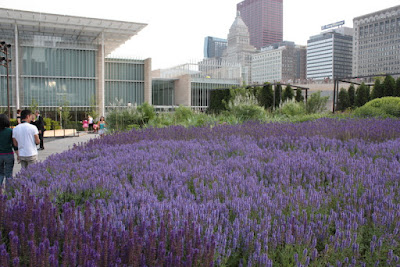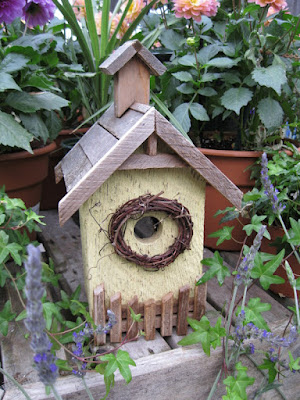 |
| The Salvia River |
The Salvia River is flowing once again in the Lurie Garden.
There are still bulbs floating here and there although they are now alliums or ornamental onions. The Star of Persia (allium christophii) is an explosion of purple while the allium atropurpureum provides violet purple dots of color. The dark green leaves of allium 'Summer Beauty' are coming up nicely, with their flowers content to wait for the next wave.
Several other plants have already joined the flood of color. There's Blue Star (amsonia), which provides some light blue. A touch of white, not unlike like the crest of a wave, comes from False Indigo (baptisia), Bowman's root (gillenia trifoliata), Beardtongue (penstamon) and the Great White Fleece Flower (persicaria polymorpha).
To accent all that, there's the pink in Jerusalem sage (phlomis tuberosa ‘Amazone’), Bradbury's bee balm (monarda bradburiana) and Great Masterwort (astrantia major).
To accent all that, there's the pink in Jerusalem sage (phlomis tuberosa ‘Amazone’), Bradbury's bee balm (monarda bradburiana) and Great Masterwort (astrantia major).
The ornamental grasses are just setting sail, although prairie
dropseed (sporobolus heterolepsis) is already providing some nice ripples in the landscape. These grasses will eventually anchor the garden, which was designed by Piet Oudolf, throughout the fall
and winter.
For now, though, the Salvia River just keeps rolling along.
 |
| Monarda bradburiana |
 |
| Geum 'Prairie Smoke' in the foreground, white baptisia in the right middle ground and the part of the salvia river in the very back. |
By Karen Geisler




























